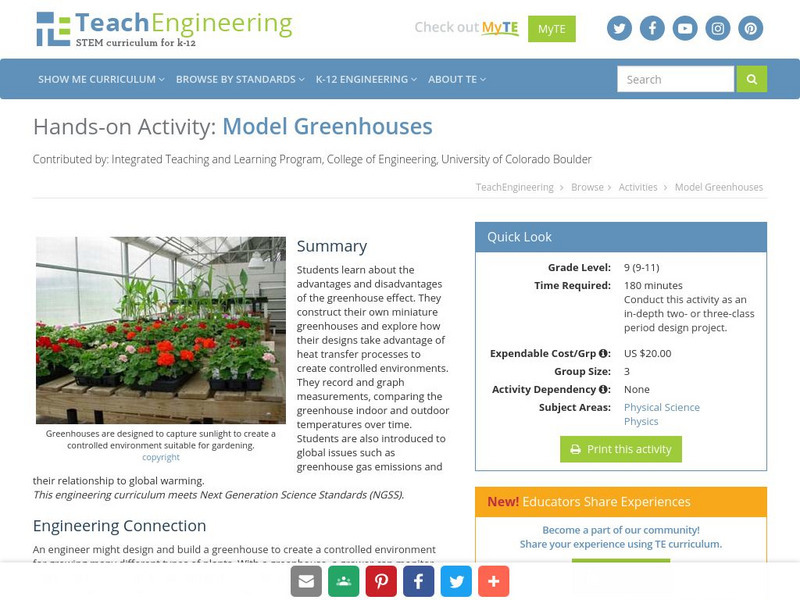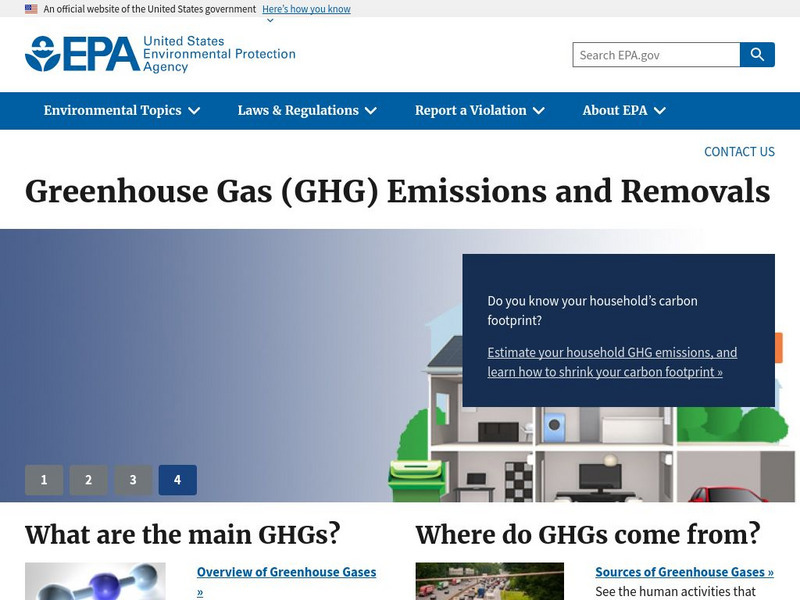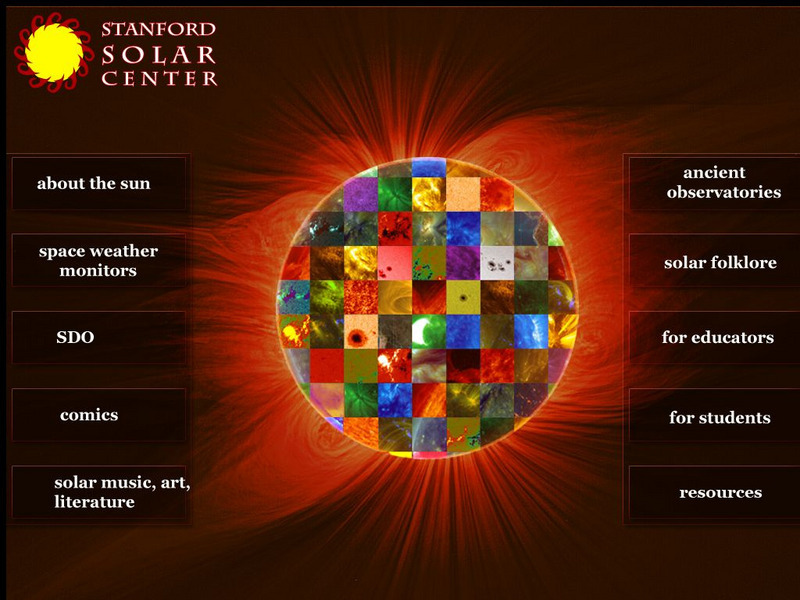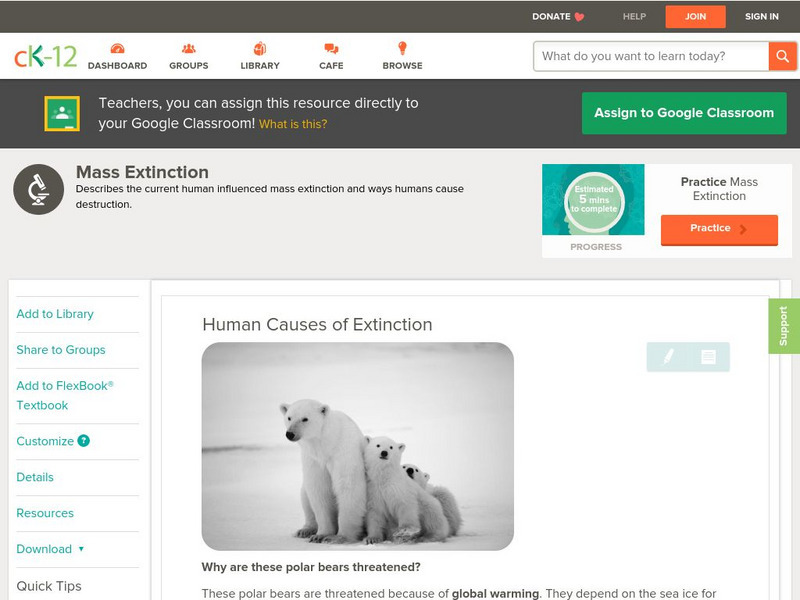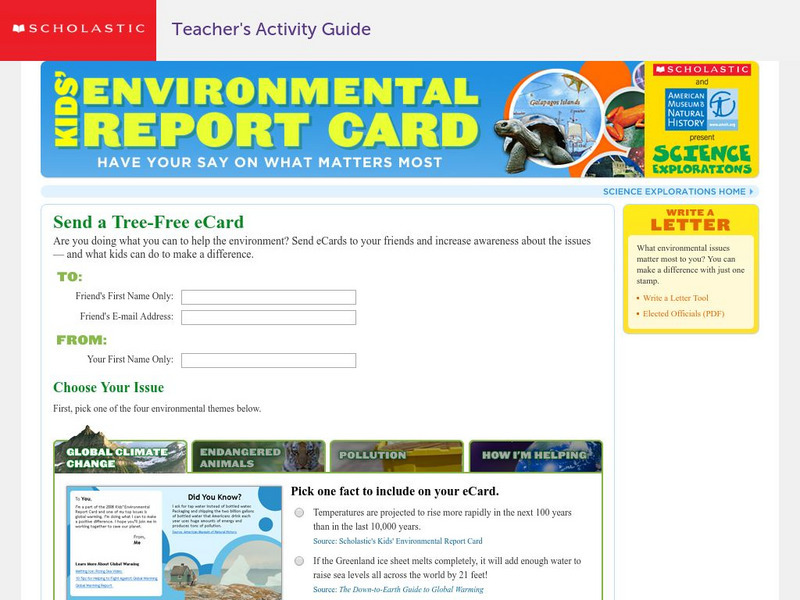TeachEngineering
Teach Engineering: Model Greenhouses
Students learn about the advantages and disadvantages of the greenhouse effect. They construct their own miniature greenhouses and explore how their designs take advantage of heat transfer processes to create controlled environments....
US Environmental Protection Agency
Epa: Greenhouse Gas (Ghg) Emissions
Earth's atmosphere contains greenhouse gases. Find out what these gases are and where they come from. Also link to other information about how greenhouse gases contribute to climate change.
US Geological Survey
Usgs: Earth Surface Dynamics (Research Activities)
This site from USGS provides several activities to help understand the interrelationships among earth surface processes, ecological systems, and human activities. Also included are links to new findings and programs concerning Earth...
Other
Wisconsin K 12 Energy Education Program (Keep)
The mission of KEEP is to improve energy education in Wisconsin's schools. It provides teachers access to resources, activities and web support for many hands-on lessons for all grade levels.
National Association of Geoscience Teachers
Nagt: History of Climate Science
In this activity. students synthesize ideas and critically evaluate the current social perspectives of climate science and social decision-making.
Other
New England Aquarium: Climate Change and the Oceans
A series of videos accompanied by student activity sheets explore the impact of climate change on the ocean and the animals that live in and around it: sea turtles, jellies, whales, shore birds, lobsters, and coral.
TeachEngineering
Teach Engineering: Carbon Cycles
Students are introduced to the concept of energy cycles by learning about the carbon cycle. They will learn how carbon atoms travel through the geological (ancient) carbon cycle and the biological/physical carbon cycle. Students will...
Stanford University
Stanford Solar Center: About the Sun
The Stanford Solar Center provides information about the sun, activities, solar art, and solar folklore.
National Earth Science Teachers Association
Windows to the Universe: Changing Planet: Melting Glaciers
Students sort photographs of glaciers and measure glacial retreat to observe how alpine glaciers have retreated over the past century. Includes a printable worksheet, links to relevant materials, and extension activities.
Center for Educational Technologies
Nasa Classroom of the Future: Volcanoes
Use this site to discover some interesting facts about volcanoes and how they affect the earth. See some great animation and photos of volcanoes as well.
Other
Union of Concerned Scientists: The Great Green Web Game
An interactive game tests knowledge of how choices affect the environment. Become more environmentally aware of how shopping behavior impacts the environment.
CK-12 Foundation
Ck 12: Life Science: Human Causes of Extinction
[Free Registration/Login may be required to access all resource tools.] In addition to habitat destruction, other human-caused problems are also threatening many species. These include issues associated with climate change, pollution,...
CK-12 Foundation
Ck 12: Life Science: 12.34 Mass Extinction
Discover how mass extinctions play a part in Earth's life history.
NASA
Nasa: El Nino
A concise explanation of El Nino. Discusses global wind patterns and ocean temperatures. Offers interactive weather-related learning activities.
Climate Literacy
Clean: Public Service Announcement (Psa) for Grades 6 12
Students study climate change and create a Public Service Announcement that communicates their understanding of the science, raises awareness about climate change, and motivates people to take action.
PBS
Pbs Learning Media: Stories in the Ice
Take a journey back through time, using ice cores to learn about Earth's climatic history, including evidence of global warming and nuclear activity.
TeachEngineering
Teach Engineering: The No Zone of Ozone
Students explore the causes and effects of the Earth's ozone holes through discussion and an interactive simulation. In an associated literacy activity, students learn how to tell a story in order to make a complex topic (such as global...
TES Global
Tes: Fronted Adverbials Grammar
[Free Registration/Login Required] This SMART Notebook resource can be used as a warm-up activity. Each slide will stimulate verbal responses on ways to begin sentences. Students will then start their own sentences with nouns, verbs,...
Scholastic
Scholastic: Science Explorations: Kids' Environment Report Card
Cast your vote on the important environmental issues. Associated with each issue, there are at least three links to sites which can further your understanding of the issue. To encourage others to respect the environment, you can also...
University of Wisconsin
Uw: Probabilities, Uncertainties and Units Used to Quantify Climate Change
This resource engages learners in using scientific data to analyze a 150-year dataset from Lake Mendota in Madison Wisconsin reflecting seasonal ice cover.
Climate Literacy
Clean: Person on the Street (Pos) Interview About Climate Science
A media project where students create a video that documents unrehearsed interviews with "people on the street" about a specific question or issue in climate science.
Science Education Resource Center at Carleton College
Serc: Greenhouse Effect Lab
Students measure temperature changes inside soda bottles filled with CO2 and air as incandescent light is shined on them to model the Greenhouse Effect.
The Franklin Institute
The Franklin Institute Online: Greenhouse Effect in a Jar
Students can investigate the greenhouse effect on the atmosphere with this simple lesson. The steps are easy and the materials needed are basic.
